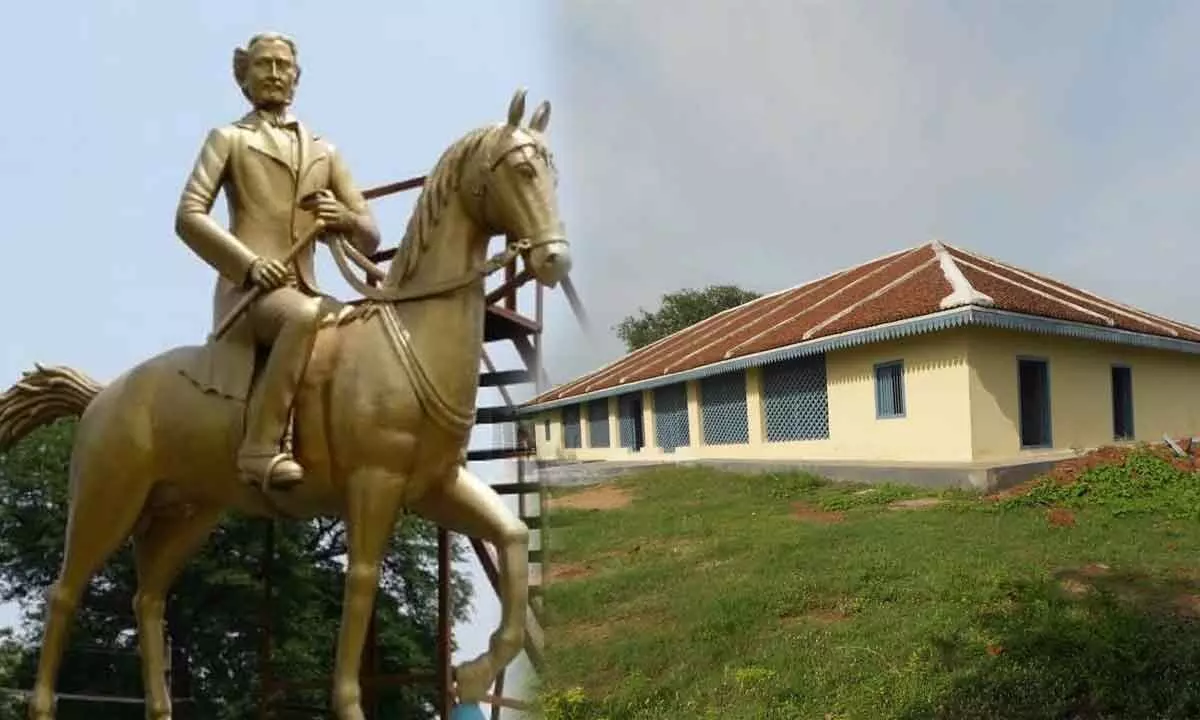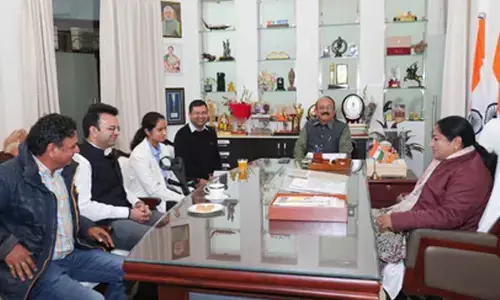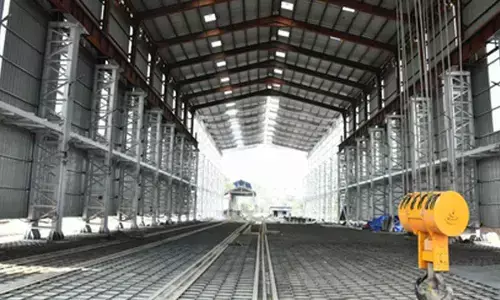Sir Arthur Cotton's residence to turn a tourist hub

Sir Arthur Cotton is the only Englishman to have 3,000 statues in the two Godavari districts of Andhra Pradesh.
Rajamahendravaram: Sir Arthur Cotton, who should have been a role model for all successive governments and irrigation engineers in Andhra Pradesh, has been unfortunately forgotten.
In fact, the present generation perhaps does not even know who he was and how bold he was to cross the line and took a stand against the policies of the British Government in India which earned him local admiration. He is the only Englishman to have 3,000 statues in the two Godavari districts of Andhra Pradesh.
It was his vision, dedication and concern for the people of the two districts which helped in converting them into the rice bowl of the country. Sir Arthur Cotton never gave up, describing himself as "a man with one idea" he knew that it was irrigation that could make a difference in India. He was no less an imperialist than his peers but what motivated him was the people's problems and not desire to bring glory to his Queen's government.
The Godavari project was sanctioned in 1847 and became a reality with six engineers, eight juniors and 2,000 masons. He studied the method adopted by the Cholas. Sir Cotton created a loose pile of mud and stone on the riverbed, which he then covered in lime and plastered with concrete, instead of building up entirely with stone. It reduced the cost by one-third of the initial estimation.
This is something which cannot be expected despite the tremendous progress the country has made in terms of technology because the kind of perseverance and sincerity Sir Cotton had is missing now. It is really sad that all these years his house in Bommuru hill near Rajamahendravaram has been lying in a dire state of neglect. In fact, many people who live nearby do not know much about the historic residence.
Now, the government has taken a decision to convert it into a prime tourist destination and has released Rs 1 crore. Sir Arthur Cotton lived in that house between 1848 and 1852. Archaeology and Museums Department, Kakinada, Assistant Director K Timmaraju told The Hans India that without changing the original structure of the house, they will renovate the damaged parts of the house.
He said that they would go for landscaping as well. The works will start soon and will be completed within three months. This house also has a stable for Sir Cotton's horse. He had conducted survey and supervision of construction of Dowleswaram project on a horse. The stable had recently collapsed. A small photo library will also be provided in the residence for the benefit of the tourists. One can have a panoramic view of River Godavari from this hill.














